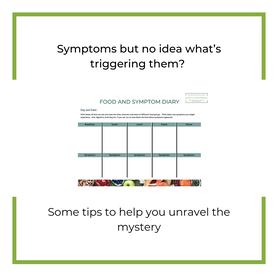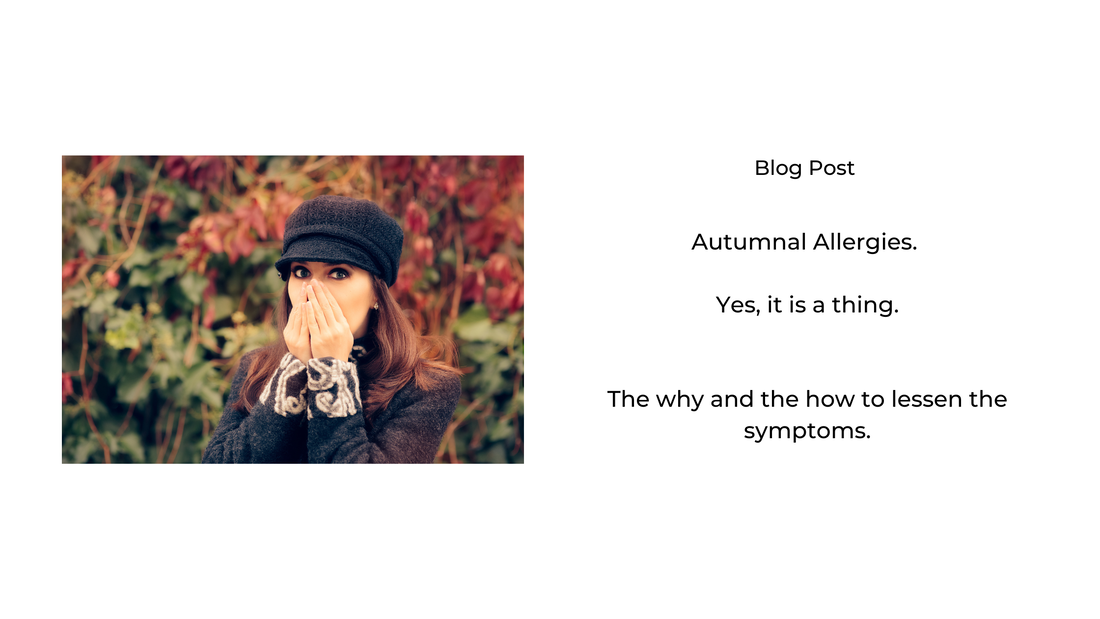ARTICLE Categories
All
|
|
You know that your symptoms are triggered by something, but you are unsure what. What can you do to decipher those triggers, without removing everything out of your diet and risking your health?
Here’s a quick overview of the information you will find:
Allergies, intolerances, and sensitivities – what’s the difference? There are three categories of food reaction – allergies, intolerances, and sensitivities. Each category has its own severity level. This is a big topic on its own and will covered by itself in next week’s blog. Here’s a quick overview:
If you suspect a reaction to food, then the first thing to do is to flag it to your medical practitioner. Depending on your symptoms your doctor may refer you for allergy testing. Ruling out a potentially serious allergy is vital. Having a diagnosed IgE allergy makes things clearer. There is a medical reason for eliminating that food from your or your child’s diet. If all your allergy tests come back negative, however, but you know that certain foods trigger a reaction, then that is where the complications can set in and it’s time to start deciphering which foods might be the culprit. My first piece of advice remains to consult with a nutrition professional before eliminating one or more food groups. What are elimination diets and why they may not be the answer There is a whole raft of symptoms that can be linked to food triggers. The most common are linked to digestion or skin conditions,, but others can include anything from joint pain to brain fog. One of my clients complained of falling asleep within 10 minutes of eating one square of chocolate! Most of my consultations relate to bloating, acid reflux, stomach pain and skin flares including acne, psoriasis, and atopic dermatitis/eczema. Elimination diets can be as simple as removing one suspected food, to removing many foods for a short period of time, under practitioner supervision. Well-known elimination diets include gluten or dairy free and the FODMAP diet. A more in-depth article on the FODMAP diet is planned for later this year. It is important for me to get this point across. It can be dangerous to follow an elimination diet long-term, especially if it excludes several food groups. My clinical experience has taught me that there is often just one or two true intolerances and sensitivities, which can often start a cascade of inflammatory responses that result in other, innocuous foods, causing reactions. In other words, continuously eliminating more and more foods is not the answer. It often seems that the more a person removes, the more they react to. A vicious cycle without end. Why elimination diets can be dangerous for infants and children and what to do instead Unless there is a diagnosed allergy, eliminating a whole host of foods is dangerous for infants and children. Any removal of individual foods or food groups should only be undertaken with the support of nutrition practitioner, so that this can be achieved safely and with no long-term consequences. Drastic eliminations can not only result in malnutrition, but for the younger population it can turn an unpleasant but innocuous intolerance into a full-blown diagnosed allergy. Infants and children have ‘naïve’ guts. Their gut microbiome (the useful bacteria we all have) is unformed and their immune response underdeveloped. Once foods have been eliminated for some time from this environment, it can be very difficult for those foods to be reintroduced. Subsequent symptoms can be stronger and last longer, even without the development of an allergy. Working with infants and children my aim is always to cautiously remove a highly suspected food and only for a very limited amount of time. My ultimate objective is always to expand the child’s diet as much as possible to support the development and health of their gut microbiome. In my clinical experience, food triggers in children often resolve as their gut and immune systems grow more robust. You think you might have an intolerance or sensitivity, what now? I find that clients who consult with me usually fall within one of three main groups.
They all have the same thing in common, a need to move past the symptoms and start eating in a way that suits them. A Food and Symptom Diary, a great self-help tool It can often be difficult to unravel which foods cause which symptoms. Reactions from one food can transpose or hide reactions from another and not all foods trigger the same symptoms. Digestive symptoms often appear quickly after the problem food, however skin conditions, specifically atopic dermatitis/eczema can take up to 72 hours to manifest. Keeping a record of what you eat and drink and any symptoms that appear can help you uncover patterns that would otherwise have been missed, especially with delayed onset reactions. For example, you’ve had a bad eczema flare and when you look back at your food and symptom diary you can see that prior to each of the last few flares you’ve eaten such and such a food. It may not be the full story, but it’s a definite place to start. The thought of completing a daily food and symptom diary can be daunting for some. So, for those clients who don’t want to do it daily, I suggest that they log the previous 24-72 hours’ worth of food after the development of a symptom. There is a proviso, however, this recall can sometimes be problematic. Humans are notoriously selective in their memory’s. Details can be forgotten, especially after 72 hours. I have a free Food and Symptom Diary tool on my website that anyone can download for free. https://tinyurl.com/4rpwnwrd . How can you be sure if a symptom is linked to a food or not? When a person is being hypervigilant about monitoring their food and symptoms, they can sometimes naturally interpret some symptoms as related to certain foods when they, in fact aren’t. This can be because of a variety of reasons including delayed-onset symptoms, or because some foods are harder to digest regardless of whether you have a digestive condition or not. Research increasingly points to intestinal hyper-permeability (leaky gut) as a root cause of multiple food reactions or it could just be because the gut is so inflamed from a genuine, unidentified trigger, that it starts reacting to random other things. As a Registered Nutritional Therapist, I work with my clients to decipher the level of symptom it might be. Using a traffic light analogy, is it a red symptom that we should absolutely pay attention to or is it a more ambiguous amber? Removing lots of foods might seem to make sense, but it may not be right My suspicions are aroused when a client says that they can eat fewer and fewer foods. This usually indicates that a red symptom trigger is setting off a cascade of inflammation which then causes a raft of ambiguous amber symptoms. Then there is also the consideration, is it a false amber? Could it be manifesting because of the underlying red trigger? Or is it in fact a true amber? This would mean that it does cause symptoms but not to the same extent as a red trigger and it could, potentially, be eaten not too often and not too much. To sum up, my top tips
Read more: What is the atopic march? Why is eczema/atopic dermatitis itchier at night? You’ve been diagnosed with an atopic condition, but what does that mean? Atopic dermatitis/eczema – a chronic condition that effects all ages The skin microbiome, the key to good skin health Autumnal Allergies – Yes it is a thing To easily keep up with my articles, masterclasses, ebooks and online programmes and receive exclusive access to early bird offers, sign-up to my newsletter Interested in what I do and who I am? Go to my website: www.jessicafonteneaunutrition.com
0 Comments
It’s autumn, you begin to heave a sigh of relief thinking that the hay fever and seasonal allergies season is finally over. Then you realise that you are still getting symptoms – itchy eyes, runny nose, a dermatitis flare, and that you are suffering from autumnal allergies.
TV adverts and magazine articles would have you think that hay fever and seasonal allergies only happen in the spring and summer, but that isn’t the case. Autumn brings its own set of allergens ready to trigger a runny nose, atopic dermatitis, and itchy eyes. If it isn’t plant pollen, what are the autumnal triggers that can cause so many issues? Weed pollen, mould spores and house mites are the most common triggers for Autumnal allergies, read on to find out more details and to get my 5 tips to lessen the autumnal allergy symptoms. Weed Pollen Not all pollen producing plants flower in spring. A whole category of weeds flower in the autumn and produce the highly allergenic weed pollen. These plants usually flower from late August until the first frost (usually around the end of November but growing later with climate change). This category of plants includes common weeds found in the UK such as nettles and sorrel but also varieties that are much newer to the UK and Europe such as the American Ragweed. Not only is ragweed a recent invader, but it also produces one of the highest amounts of pollen, causing uncomfortable hay fever and dermatitis symptoms in many sufferers. Mould Spores Mould is around us all the time, but at this time of year levels peak with the falling leaves gently composting on the ground releasing large amounts of allergenic spores. These are the main types of mould which have been highlighted as being triggers for allergy symptoms:
Dust Mites Many sufferers of asthma, eczema or hay fever also have a dust mite allergy and whilst dust mites exist all year, reactions tend to peak in autumn as the weather becomes damp but remains relatively warm and we retreat inside and close our doors and windows, but we haven’t yet put our heating on. 5 Tips to Lesson the Autumnal Allergy Symptoms
If you were interested in this article, you may be interested in these other blogs I’ve previously published: What is the atopic march? Why is eczema/atopic dermatitis itchier at night? You’ve been diagnosed with an atopic condition, but what does that mean? Atopic dermatitis/eczema – a chronic condition that effects all ages The skin microbiome, the key to good skin health To easily keep up with my articles, masterclasses, ebooks and online programmes and receive exclusive access to early bird offers, sign-up to my newsletter Interested in what I do and who I am? Go to my website: www.jessicafonteneaunutrition.com |
AuthorI’m Jessica Fonteneau, I’m the eczema specialist and I help people Escape from the Eczema trap. Archives
April 2024
Catégories
All
|



 RSS Feed
RSS Feed